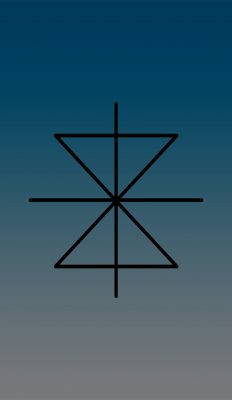LINKS
In the list below I will provide some links to sites that present other views or more detailed information of interest to those exploring Observer Physics.
- Harry Palmer and Avatar Materials, Writings, Exercises, and Activities. http://www.avatarepc.com/ This is the official Avatar website and is the best source for material related to the Avatar Materials (and the Course that goes with them) or other writings and activities of Harry Palmer.
- HYPERPHYSICS: a good general resource for information about standard physics. http://hyperphysics.phy-astr.gsu.edu/hbase/hframe.html This site is done in hypercard format by C. R. Nave of Georgia State University. It is quite accessible, easy to navigate, and has lots of good charts and examples. He also has HYPERMATH, which is accessible from the same site but seems not as richly elaborated.
- David Hestenes and Geometric Algebra. Physicists work with mathematics, and the mathematical tools they use have become increasingly sophisticated and varied. Mathematician/physicist David Hestenes has spent about 40 years developing Geometric Algebra (GA) and Geometric Calculus (GC) (based on Clifford Algebra) as a comprehensive mathematical tool with geometric interpretations for exploring and communicating in the field of physics. GA combines many different branches of mathematics that are used in physics into a single elegant system that leads to geometric interpretations. Easy access to geometric interpretation is important because much of physics has become so abstract that it is difficult to visualize. What Hestenes calls a “vector” can serve as a component of the observer’s attention. Thus GA also seems particularly suited to the viewpoint of Observer Physics. Hestenes has studied the Dirac Equation, Dirac Current, Zitterbewegung (zbw), and ways to model the electron using GA/GC. This is also relevant to OP, as is his work on gravity. For example, OP views electron zbw and spin as related to the way photons unwind from electron vortices. Hestenes has posted many of his writings on the Internet. Another good place to start learning about GA/GC is the Geometric Calculus R&D Home Page at http://modelingnts.la.asu.edu. Chris Doran of the Astrophysics Group, Cavendish Lab, Cambridge, UK, did his Ph.D. thesis on Geometric Algebra and its Application to Mathematical Physics. He and some other colleagues have formed the Cambridge University GA Research Group to study, apply, and write books and articles on GA and GC. Go to http://www.mrao.cam.ac.uk (Mullard Radio Astronomy Observatory website) for more about their activities. Chris Doran and Anthony Lasenby have a book out from Cambridge University Press entitled Geometric Algebra for Physicists. Chris Doran has posted on the Net a slide show on “Dirac Theory and Multiparticle Systems”. Dolan, Stephen Gull and Anthony Lasenby have posted “Imaginary Numbers are not Real – the Geometric Algebra of Spacetime”, a long article that contains an introduction to GA.
- http://en.wikipedia.org/wiki/Dirac_equation This is the Wikipedia article on the Dirac Equation and the Dirac Current that led to Dirac’s successful prediction of the positron and the general notion of antimatter.
- http://www.futureworld.dk/tech/ether/ether.htm The physics of this “Ether Technology” site is very speculative, but it has some nice animation of phase conjugate mirrors.
- http://www.ps.uci.edu/~superk/oscillation.html “Neutrino Oscillations and Neutrino Mass”
- http://cupp.oulu.fi/neutrino/ “The Ultimate Neutrino Page”
- http://www.einsteinconspiracy.co.uk Roger Anderton’s website with discussions of Boscovich, Whyte, and Baranski as unrecognized precursors and associates with Einstein in the work on a Unitary Field.
- http://mist.npl.washington.edu/npl/int_rep/tiqm/TI_toc.html The Transactional Interpretation of Quantum Mechanics by Professor John G. Cramer. Cramer also has many interesting articles on various aspects of modern physics.
- http://www.npl.washington.edu/AV/av_index_sub.html This is Cramer’s column “The Alternate View” that speculates on advanced subjects in physics for Analog SF magazine.
- http://www.philosphere.com/index.php The Private Diaries of Lancelot Law Whyte.
Other sites of interest that explore controversial areas of physics and related topics in unconventional ways:
- Soulinvitation or Implosion Group is a wild site full of fascinating ideas and fun computer graphics by Dan Winter. Winter writes in a style that sounds like a Bucky Fuller talk done by James Joyce after reading Howl. You can skip the politics and focus on the geometry and mathematics. You can ponder the philosophy or explore it.http://www.soulinvitation.com/indexdw.html.
- Matti Pitkanen’s “Topological Geometrodynamics”
- The Tom Bearden Website contains a wealth of thought provoking discussions of important issues in physics as well as his research and development projects. http://www.cheniere.org/index.html
- SOLOMON’S TREASURE http://www.geocities.com/solstreasure/index.html. For an unusual enovel about the origins of terrorism that takes off from a creative exploration of the Tarot and some principles of quantum physics, go to Geocities.yahoo.com and look in the Entertainment and Arts Section under Solomon’s Treasure: A Sci-Fi Enovel.
- QUANTUM COSMOS: http://www.quantumcosmos.com Check out this site if you are interested in exploring consciousness, reality, time, or good literature. Also if you find yourself high and dry in Vedaland with no place to go, well. . . . maybe it’s time to turn on the creativity.
- QUANTUM FIELD THEORY: Pedagogic Aids Http://www.quantumfieldtheory.info This is Dr. Robert Klauber’s site for easing into quantum field theory.
- LAWS OF FORM: Sites about the work of George Spencer-Brown. Http://www.enolagaia.com/GSB.html This is Dr. Randall Whitaker’s material on GSB and his Laws of Form. Another recommended site is by Richard Shoup. Http://www.rgshoup.com. (Check out his professional interests. If this address does not work, — it’s hiding in a Google cache — you can get there from Whitaker’s site or Google Richard Shoup.) On the subject of Richard Shoup, check out Link Theory and the Boundary Institute (www.boundary.org with lots of nifty pdf papers on the deep connection between the core laws of quantum mechanics and simple relational mathematical structures) that he and his colleague Thomas Etter have devised. Francis Gastellu has a nice site with a downloadable program you can play with: Http://causaergosum.net/lof/index.html. GSB designed a formal logic based on the notion of boundaries structuring forms. He called it Laws of Form. It is equivalent to Propositional Calculus, but has some neat features. His primitives “call” and “cross” give a sense of Avatar’s create and discreate procedures. See the little demo with circles at Shoup’s site.

